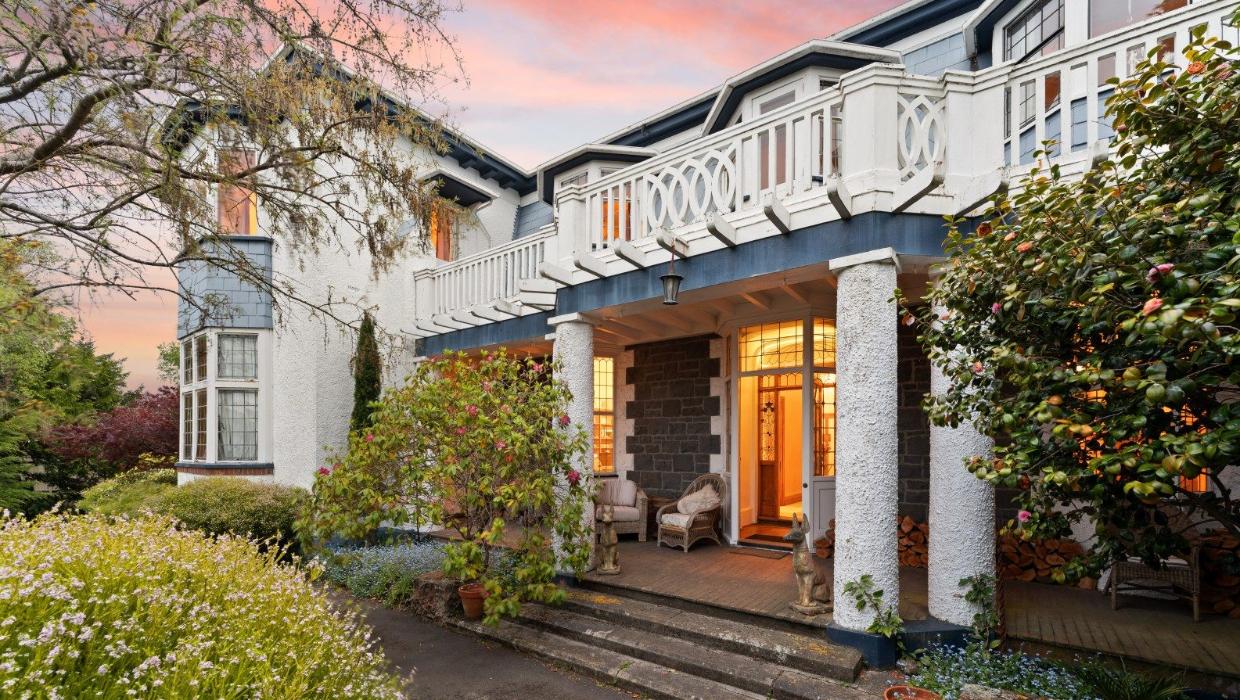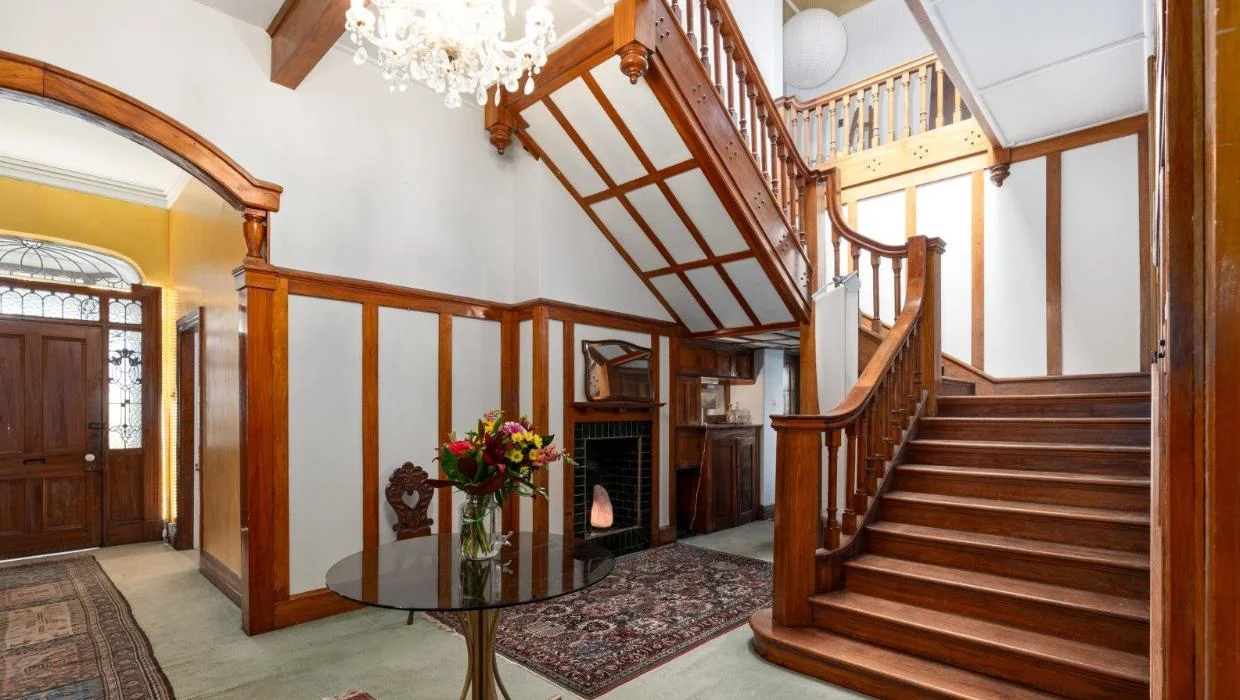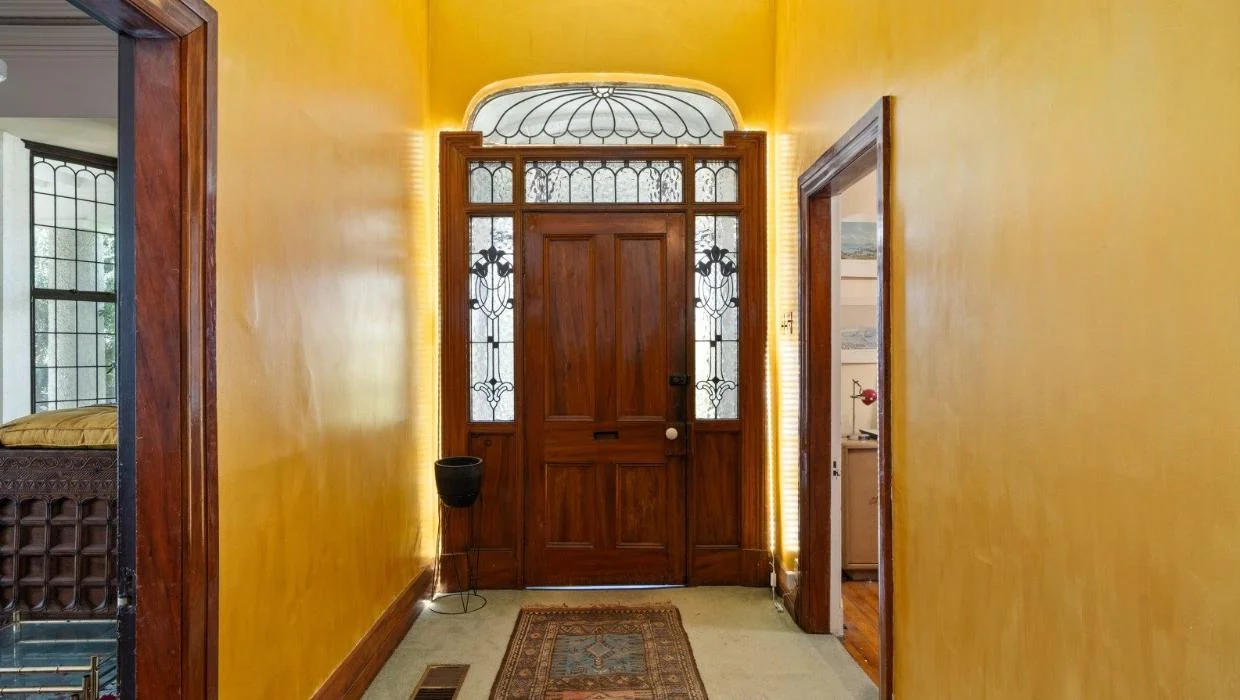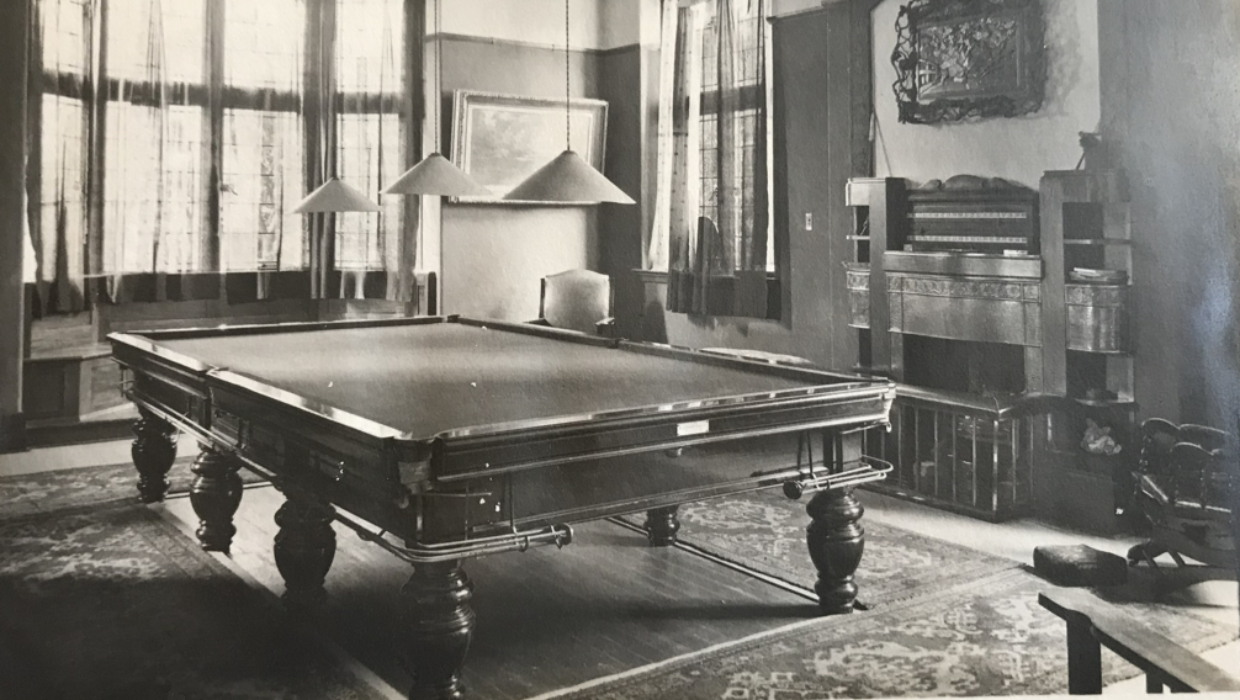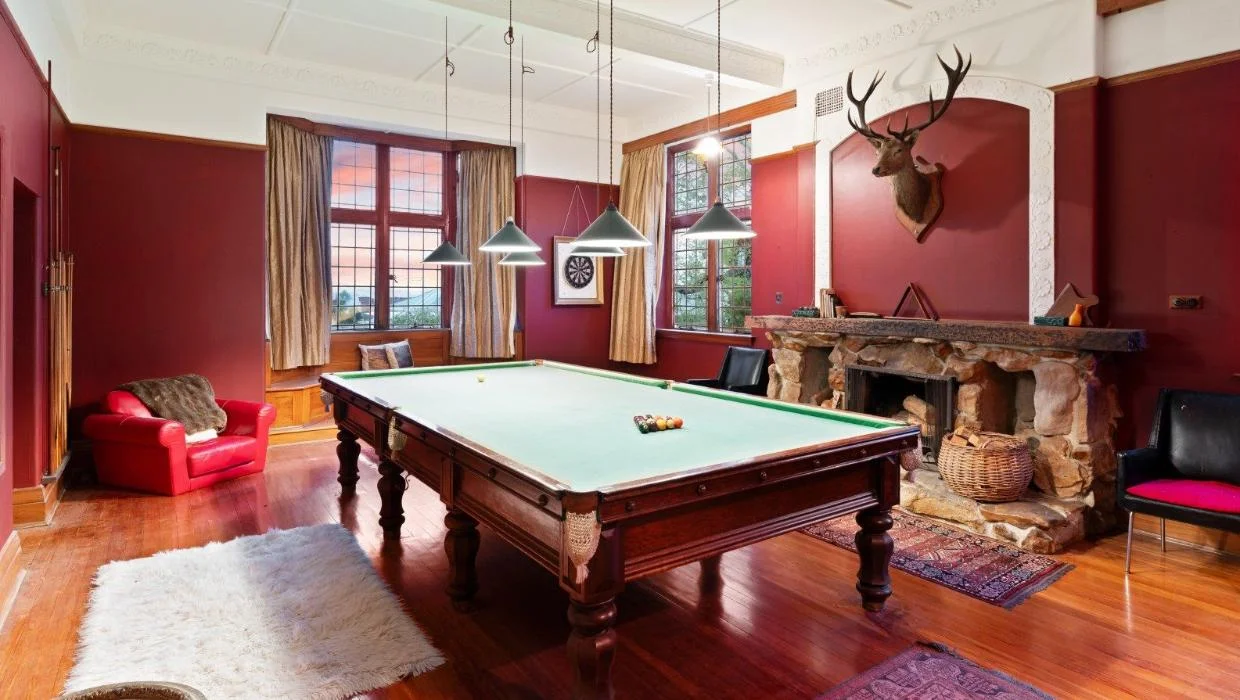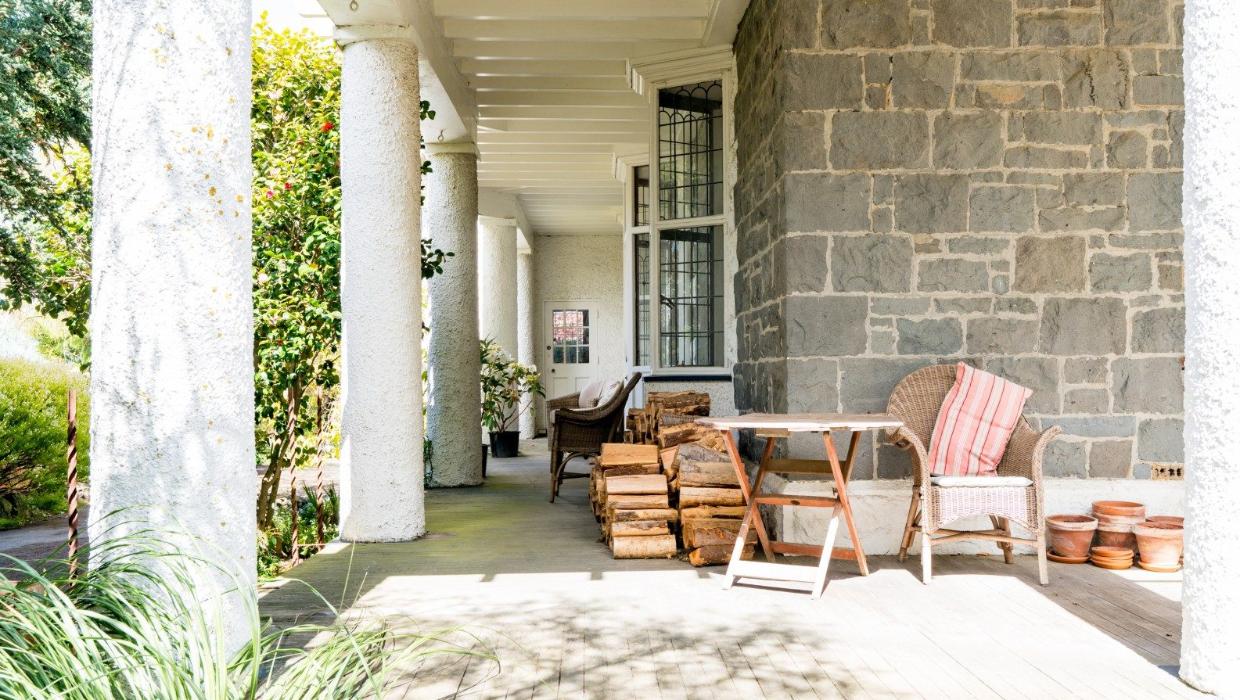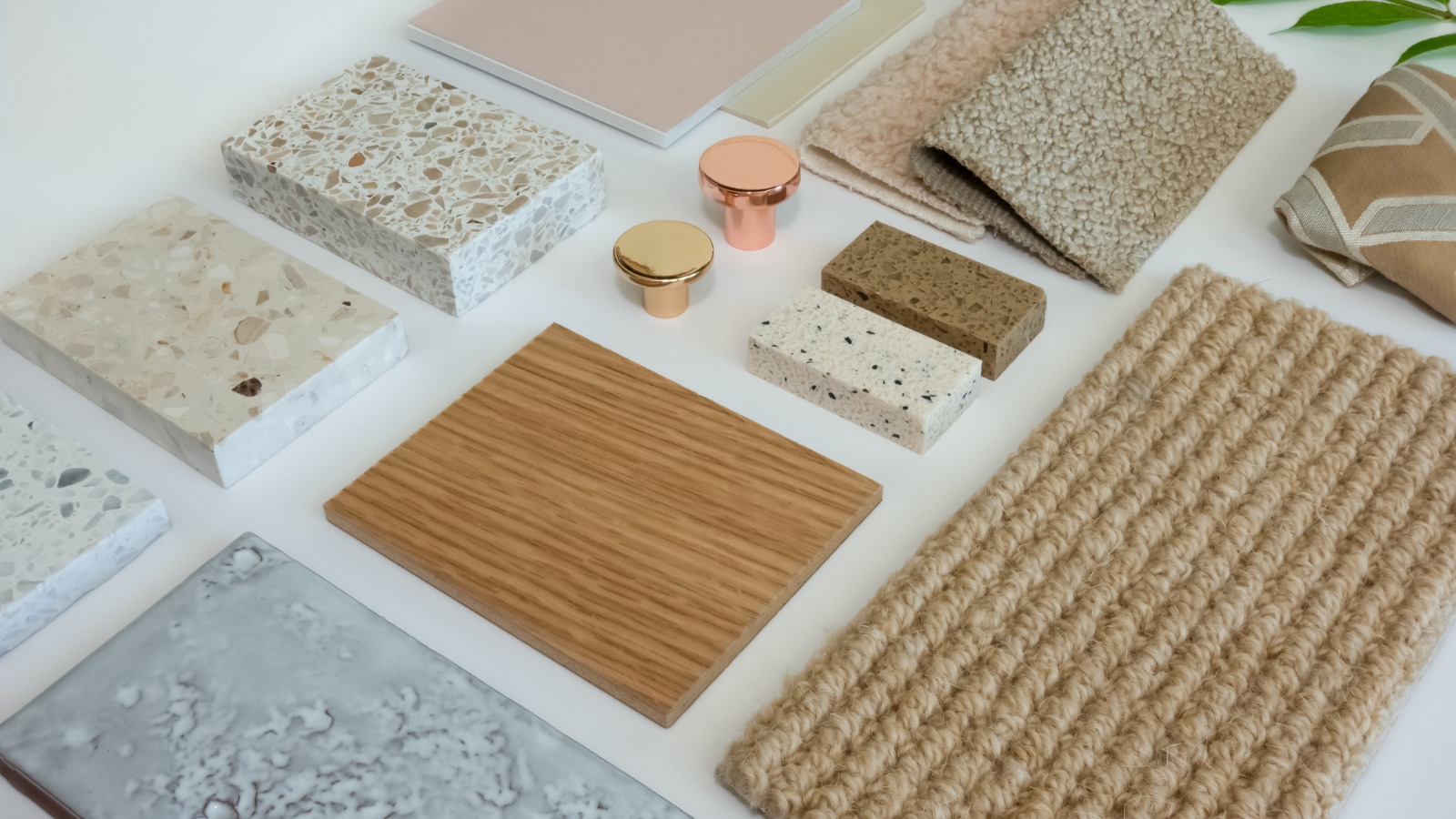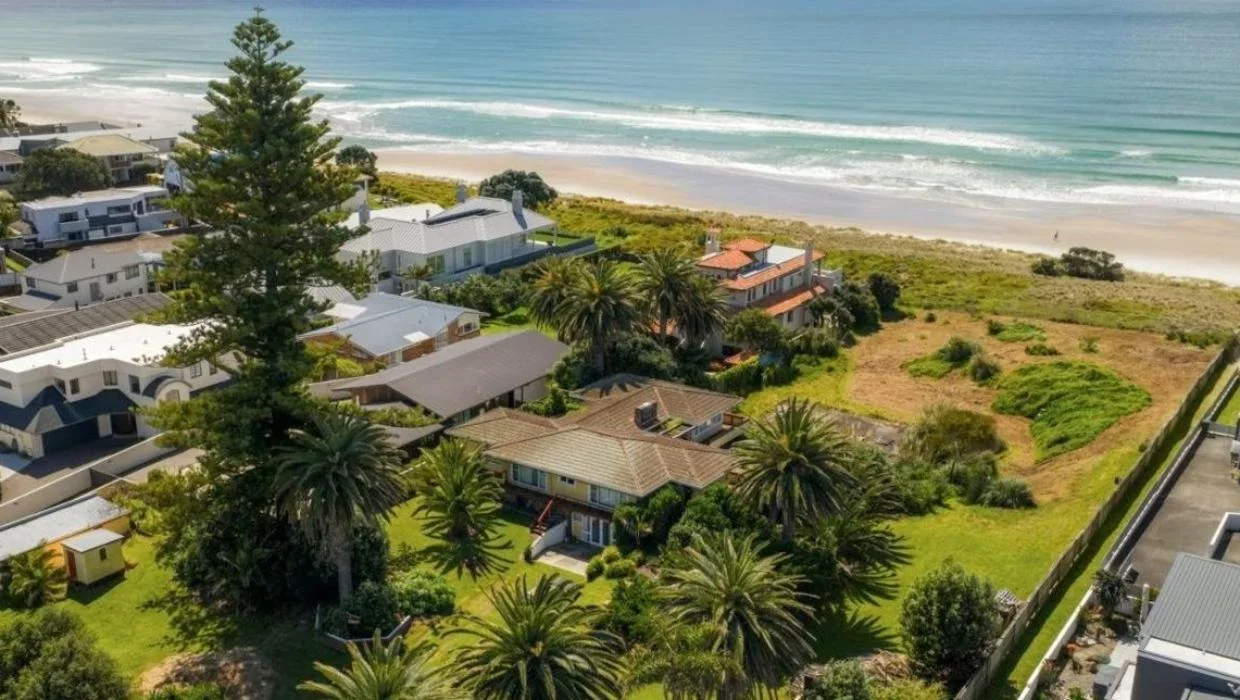Explore
Mansion built for former Mayor of Dunedin is on the market - and it has some stories to tell
Broomhill, built in the 1870s.

WATCH: Peek inside one of Dunedin's grandest mansions
First impressions count and when Katherine Richards walked through the door of Broomhill, the grand 1870s Victorian mansion in Kaikorai, Dunedin, her reaction was: “Wow, this is a lot of house. Is this going to be too much for us?”
Richards had previously lived in a single-storey 1970s home in Wanaka, and a condo in San Francisco, so the difference in scale was stark. But the gracious mansion on top of a hill overlooking the Otago Harbour quietly won out.
“It just felt sunny and warm. It's grand and it's got a lot going on but it's also a cosy family home as well,” she says.
“We spent forever getting lost for the first month in the house. That's why we had to name the rooms blue room or green room, although it does sound a little pretentious!”
Broomhill is one of Dunedin’s notable houses, with screeds of information about its history on the council’s website. The envelope, or exterior, of the house is heritage listed.
The mansion has a beautiful sweeping staircase.
Leadlight glass surrounds the front entrance.
Originally called Bryndwylt, the mansion was commissioned and built from stone reportedly quarried on-site. The man behind the build was the grandly-named Nathaniel Young Armstrong Wales, and it remained his residence for nigh-on 30 years.
Young Armstrong Wales was a high-flyer in his day - a founding partner at the prestigious (and still operating today) architecture firm Mason & Wales, a city councillor, MP and Mayor of Dunedin from 1895-1896.
He was, in part, responsible for many of the heritage buildings which still adorn the streets of central Dunedin, including St Matthew’s Church, Wains Hotel and the Government Life Insurance Building.
Bryndwylt also served as the home of Sir John Sutherland Ross who was a prominent businessman in Dunedin in the 1920s. He put his stamp on the house, renaming it Broomhill and making significant architectural changes during the 20s and 30s.
In those days the house hosted important members of Dunedin society - it had a gun room, cloak room and a full-sized billiards table which is still in situ today and comes with the house.
One of the photos the family of a previous owner donated, showing the mansion in 1921.
An old photo of the billiard table, which comes with the house.
The house was sold on and eventually turned into flats, until the 1960s when the Blennerhassett family purchased it and converted it back into a family home and remodelled the kitchen and added a garage for two cars.
Although the land size is smaller than it used to be, the house still sits on a 1,459m² flat section, and the mansion itself has a 640m² footprint.
The home includes several living rooms, up to 7 bedrooms, 3 bathrooms, a service wing and 3 kitchen spaces. The master bedroom also features a walk-through wardrobe and ensuite. There are views across Dunedin and out to the harbour and the property, although secluded from the road, is only a few minutes from local shops and amenities.
The mansion is full of cosy and welcoming spaces.
The house is sunny, light and airy.
To warm the home against the chilly Dunedin winters, there is a “beast of a furnace” in the basement, aiding the open fireplaces and heat pumps around the house.
Broomhill retains many of its original features including a sweeping staircase, stepped-timber floors in the billiard room, stone fireplaces, a Mansard roof, dormer windows and leadlight glazing. Interestingly it also has a strongroom with a 5cm thick door, a 40-foot well in the garden, which has been covered over, a 1970s intercom which used to call people for dinner, and a servants staircase leading up to Richards’ favourite feature of the house - a ship’s hatch which opens out onto the roof.
“There’s also a dresser in the drawing room, if you press on the central pillars it opens secret compartments, it’s things like this that make the house so cool,” she says.
High ceilings and picture rails reflect the Victorian era, when the mansion was built.
One of the most important treasures of Broomhill is to be found in a far more modest place - a cardboard shoebox. It’s full of photos which have been donated by former owners.
“People who have been past owners or grown up in the house sometimes knock on the door. A descendant of Mr Ross said he was going through his photo album and he felt the photos of the house that he had should stay with the house - so of course, they'll stay with the house. One of the Blennerhassetts also knocked on the door and asked if he could play a game on the billiards table.”
The billiards room as it is today.
After a decade of enjoying Broomhill the family has made the decision to sell. “We bought this as a family home and our daughters are now grown, so it’s just time,” says Richards.
“It’s such a lovely place to host people, it’s a good home. One of the things I’ll miss is sitting in bed having a cup of tea in the morning and watching the sun come up over harbour. It's just lovely.”
The stone was quarried on site and used to build the mansion.
So would another mansion be on the cards? “I never thought I'd live in one to start with, so who knows?” she says.
Listing agent Alice Munro from Bayleys says there’s currently nothing comparable to Broomhill which is for sale in the area. “It’s not often a house with this much architectural and historic significance comes to market,” she says.
Broomhill is for sale, price by negotiation. The CV on the property is $1.3 million.
Author
Other articles you might like
